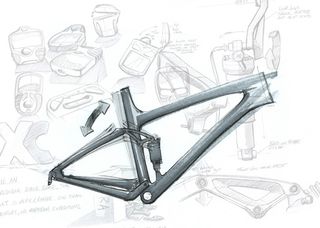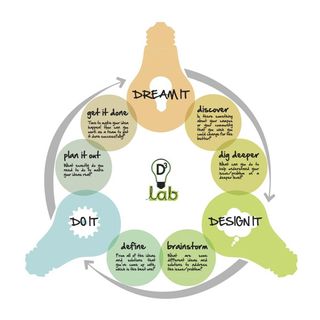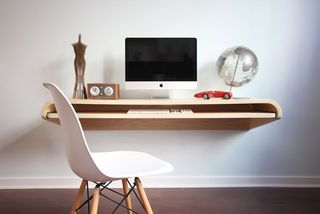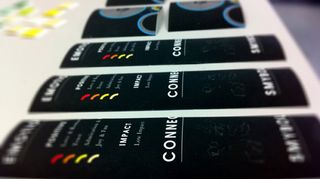6 important ways that design differs from art
Where does art end and design begin? Will Gibbons explains the 6 most important distinctions between them.

What's the difference between art and design? This is a rudimentary question that often gets overlooked by those who are familiar with the two occupations and their distinctions.
Yet people often scratch their heads when I inform them that I've got a Bachelor of Fine Arts degree in Industrial Design with a focus in Product Design. Do I make graphics, books, bridges, buildings, websites, clothing, sandwiches? I've been asked all those questions.
So let's shed some light on the profession of design and how it differs from art. Here are the six main distinctions I'd make between the two disciplines.
01. The end product
Artists and designers both create visual products, to put it simply. Artists however, create eyecandy to be consumed by the end user. The actual painting or illustration is created with intention to be the final result of the artist's vision.
Whether this comes to the market as a book illustration, a canvas for a gallery, a framed work to be hung in a house, or a mural, the artwork is the final product of consumption.
Designers create beautiful images as a form of communication and are one small step within a production pipeline. A designer will use renderings, sketches, models and other means to communicate their design to a team of people who all work together to create a consumable end product. The end product may be a video game, movie, lawnmower, laptop, backpack or piece of furniture.
The designer's initial sketches, renderings or mock-ups are not intended to be seen by the consumer, but rather to explain their design solution to those who will help bring the design to fruition.
Get the Creative Bloq Newsletter
Daily design news, reviews, how-tos and more, as picked by the editors.
02. How problems are solved

Everyone solves problems one way or another. In most cases, an artist's problem to solve is that they have an idea or vision and want to share it with others. He or she creates a piece of artwork and the problem is solved. Designers are often approached with a client's 'problem' which he or she then solves for.
For example: a company wants to increase sales of a product they've sold for years. The designer's job then turns into several smaller problems that must convince the (potential) consumer that this product is better than one he or she already owns.
The designer could chose to freshen up the form, improve ergonomics, leverage a different production method that lowers cost and, why not incorporate a new feature?
Maybe the end result is a modern product that folds up to save space, is more comfortable to use and even costs the consumer less money than the last one he or she bought before. Designers solve problems for clients and consumers.
03. Level of craftsmanship
Craftsmanship is a term used to describe the skill used to create a product. Artists are craftspeople because without a high level of craftsmanship, their work would not stand apart from a novice's. Often, an artist's craftsmanship increases over time and therefore increases the value of a painting created by him or her.
A designer's craft is in communication and solving design problems quickly and elegantly. A designer need not a high level of craftsmanship to 'sell' the ideas the way an artist may, but nobody can argue, the higher the craftsmanship, the more valuable the designer.
04. How people interact with it

The interactions people have with artists' work are often very passive and visual. Unless it's an installation or sculpture, the interactions are often quite minimal.
Interaction however, is a very big part of design. Most designers create solutions to common problems by designing products that people interact with often. Whether it's furniture, tools, electronics, clothing, kitchenware, or cars, all of these products are designed with the end user in mind. Before a design can be dubbed successful, it needs to address a number of issues, one of the most important being interaction.
05. The functions they serve
What function does artwork serve? It's used as a visual stimulation, as decoration or storytelling most often. Products brought to life by designers need to serve a function to be successful.
'Functional design' is a term often used to say 'this product functions in a way to address a specific need'. If the most beautiful can opener was designed with a high-tech, fancy, ultra-light carbon fibre material, it may be 'designed', but it may not be functional. The material may not be durable or sharp enough to open a can with and if it's 100 times more expensive than the conventional can opener, it may prove impossible to sell as a consumer good.
In this case, rather than being a product, the ultra-sleek carbon fiber can opener would likely be considered a piece of artwork as it would serve to make a statement, and to be observed – not used to open cans. And in all likelihood, it would not be mass-produced, which brings me to my final point.
06. How it's produced

Artwork is often created to be sold as originals for a sum of money that is representative of the amount of effort and hours put into it by the artist. Design is usually created with mass-production in mind.
Whether it's a consumable product, an application, graphics, or interiors, the number of pieces that will need to be produced plays a big role on how something is designed. A designer will often keep this in mind as a product becomes more complex. Automated production processes should be used to reduce labor costs.
Designers tend to try to reduce production costs and consider the entire life of a product (from concept to consumption to disposal) and integrate features to be more consumer and earth-friendly.
Finally...
I, in no way infer or claim that design is better than art, only different. Both are valuable and require massive amounts of learning and practice to do well. The next time you need to explain what you do, perhaps some of the above distinctions will come in handy.
Words: Will Gibbons
Will Gibbons is an American freelance industrial and concept designer. View more of his writing at willgibbons.com.

Thank you for reading 5 articles this month* Join now for unlimited access
Enjoy your first month for just £1 / $1 / €1
*Read 5 free articles per month without a subscription

Join now for unlimited access
Try first month for just £1 / $1 / €1
The Creative Bloq team is made up of a group of design fans, and has changed and evolved since Creative Bloq began back in 2012. The current website team consists of eight full-time members of staff: Editor Georgia Coggan, Deputy Editor Rosie Hilder, Ecommerce Editor Beren Neale, Senior News Editor Daniel Piper, Editor, Digital Art and 3D Ian Dean, Tech Reviews Editor Erlingur Einarsson and Ecommerce Writer Beth Nicholls and Staff Writer Natalie Fear, as well as a roster of freelancers from around the world. The 3D World and ImagineFX magazine teams also pitch in, ensuring that content from 3D World and ImagineFX is represented on Creative Bloq.
